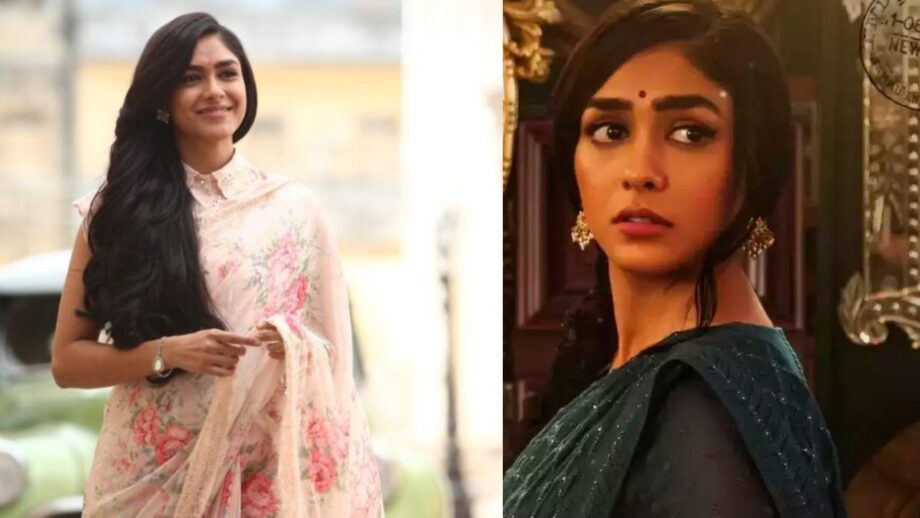Sita (Mrunal Thakur) is dressed in an Organza saree that has a blue hue similar to the sky for this look. She wore this saree with a high-neck blouse with a collar and half-puffed sleeves. The centrepiece of this outfit is the basic, print-free top, which complements the saree’s delicate floral patterns. A saree-appropriate collar is also a distinct type of collar. Her open hairstyle and one-pleat dress finish the whole look.
A basic outfit that turned out to be quite gorgeous is this cotton saree with a blouse that has a rounded sweetheart neckline in the same color. The choker, studs, and single-bangle design were chosen in a contrasting golden color since the neckline is a little deeper than usual. The large sleeves of this outfit are also the ideal complement to stiff cotton sarees.
Her half-saree in this outfit is made of a blend of semi-net and art silk. The sparkling skirt and the blouse with a net finish draw attention to the turquoise outfit. The flow of a half-saree is its most crucial component. Her stride in this picture is made even more beautiful by the volume and flow of the skirt.
The half-body saree is decorated with Chamki work and has an embroidered border. The top features a classic silk motif pattern, while the skirt has traditional silk checks. Again, this shirt has a straightforward U shape, but a silk blouse looks best with a 3/4 hand. Since a necklace would have detracted from the design of the saree fabric, the stylist avoided wearing one.
Sita appears to prefer flowery patterns. Another flowery saree made of chiffon is this one. This blouse cut is typically associated with the 1960s style. Mega or cap sleeve style describes this sleeve cut. The collar has Hakoba embroidery and is a buttoned Chinese collar. A blouse cut like this is hardly ever seen these days. The stylist chose an ornamental watch for her right wrist in order to complement the professional appearance that the blouse and saree outfit gives off. Her fashion sense is further enhanced by the huge stud earrings she is sporting.

